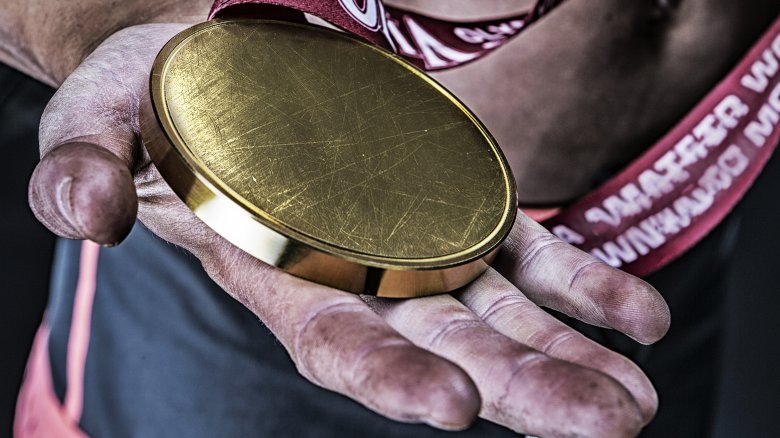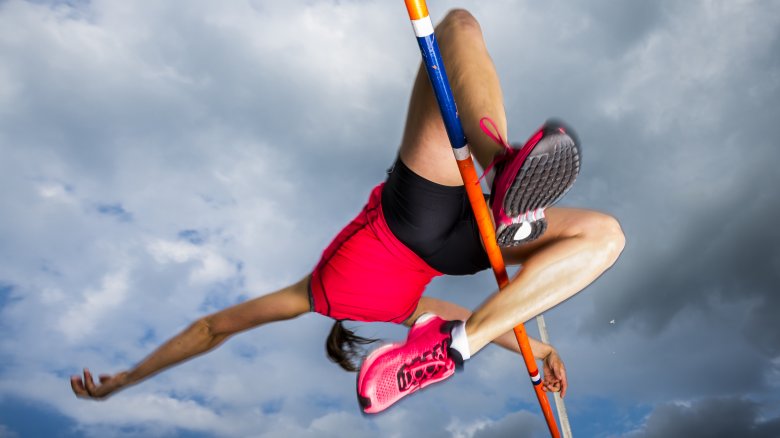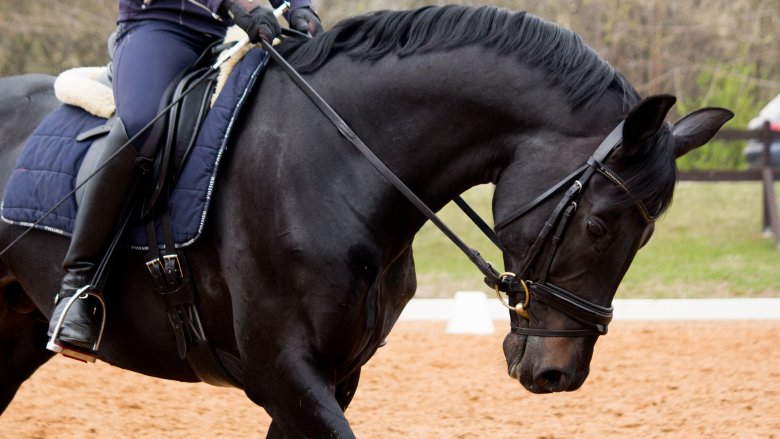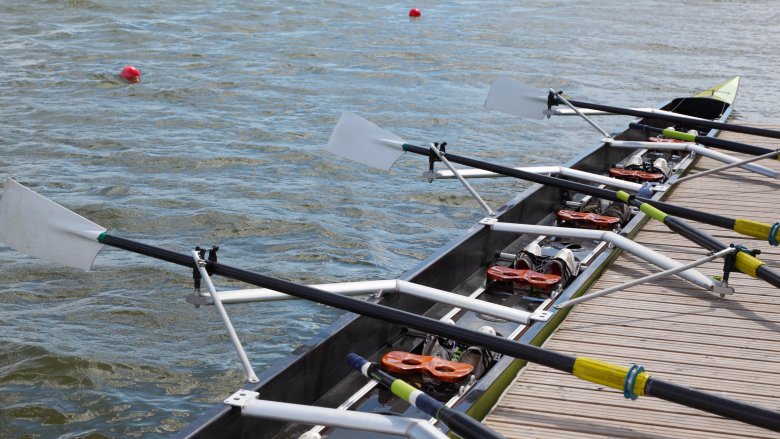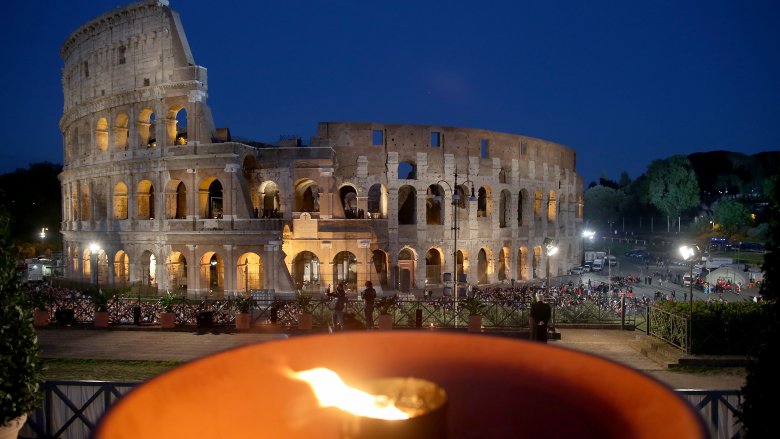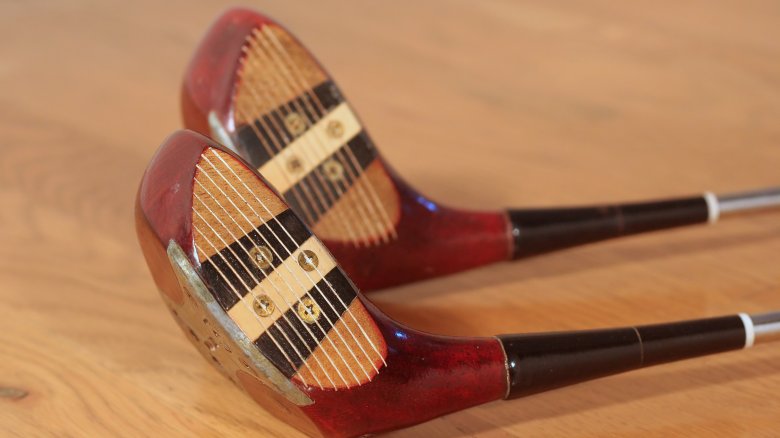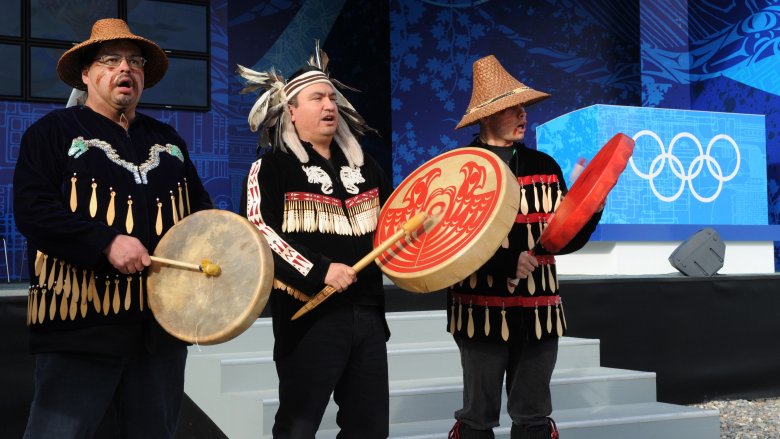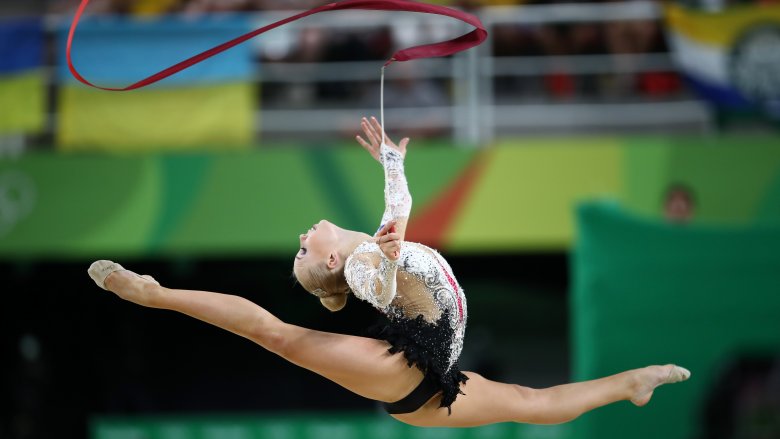The Olympics Are Pretty Messed Up
Every time the Olympics roll around, people from all over the world tune in for the pageantry, the patriotism, and the athleticism. It's a big deal, no matter what country you're from or who you're rooting for. While it's pretty much guaranteed we're going to be able to tune in to our favorite sports and see the very best of the best, there's a lot that goes on behind the scenes. Sure, there's all the hard work and grueling training every athlete goes through before they even get there, but let's talk about the messed up stuff that's too often overlooked in favor of the proud gold, silver, and bronze moments.
What's that smell?
Rio was probably the most high-profile when it came to pollution problems, and according to a CBS News interview with biologist Mario Moscatelli, it was extreme. He said athletes had a ton of reasons to be concerned ... literally because there were literal tons of raw sewage and garbage being dumped into the waterways. As if that wasn't bad enough, you can add at least one human body. That washed up on the beach that was going to be used for beach volleyball. Ahh, paradise!
It's not fair to pick on Rio because most Olympic venues aren't nearly as pretty in person as they are on television. London courted a £175 million fine from the International Olympic Committee because of its nightmarish air pollution, and it also failed miserably at keeping its promise to host a zero-waste event (via The Guardian). The Telegraph says there was toxic smog in Beijing, too, and consultants found the air was filled with pollution well above what was deemed safe by the World Health Organization. In 2004, Athens was condemned by Greenpeace for failing at its promises to deliver the greenest Olympics ever, and Sydney locals called the Olympics the Smelly Games. Why? Because, says The Telegraph, of smells coming from the nearby Homebrush area, once the site of the city's largest slaughterhouse and current storage location of some inconvenient toxic waste. They don't usually show that on television.
Hitler's Jewish medal winner
Just the fact Hitler's Germany hosted the Olympics is strange enough, but it makes sense when you know the 1936 Games were a carefully crafted piece of propaganda that only occasionally went wrong for the Third Reich. (Here's looking at you, Jesse Owens. Kudos!) One woman has been reduced to a bizarre footnote in the story, though: Helene Mayer. Mayer took home a silver medal in fencing for Germany and tossed out the old Nazi salute from the winner's stand, despite having a Jewish father and losing almost all her rights as a German citizen. Even though her father died of a heart attack in 1931, her heritage meant she was still forbidden entry into sport clubs.
According to The Guardian, she ended up being the single token Jewish-German athlete allowed to compete for Germany. With the rest of the world getting a little suspicious about Germany's genocidal leanings, she was the compromise. She lost — to Hungarian Ilona Elek — and moved to the U.S., while her brothers stayed in Germany and were forced to labor away for the Nazis in a factory. Just why she represented Germany — and saluted Hitler — remains a weird, uncomfortable mystery. Succumbing to cancer in 1953, she left behind no writings, no explanation, and no traces in the German media. They were forbidden to write about a Jewish woman, even if she had saluted.
Proving girls are really girls
Everyone knows about the drug testing, but did you know about the gender testing? Rules were in place from 1968 to 1998, and according to Nature, the original plan was to submit female athletes to a full gynecological exam. That was found to be too demeaning and traumatic, so it was replaced with genetic, laboratory-based testing because that was ... better?
The goal was to prevent men from dressing as women to compete. Did that ever happen? The answer is complicated. The story goes (says Spiegel Online) that in Berlin's 1936 Olympics, Dora Ratjen competed in the women's high-jump. She came in fourth, but went on to win a ton of awards. Until, that is, a police officer didn't believe the ID she was using was hers and arrested her for fraud. It eventually came out that when she was born, she was identified by a midwife as male and then female, then simply raised as a girl with both genitalia.
In the same games, there was controversy brewing around the women's 100-meter. Longtime favorite Stella Walsh was having her records challenged by Helen Stephens, says Mental Floss. Rumors started circulating that Stephens was a man, and she underwent the first genital inspection of the Olympics. She was definitely female, but the story isn't over. Walsh was killed in a 1980 mugging, and the autopsy revealed she wasn't female at all — she was intersex (somewhere in between). The backlash was immediate, and sad.
An animal-lover's nightmare
Let's start with dressage. Watch a few minutes, and you'll start to think those horses are moving in incredibly unnatural ways. It's not your imagination. Motherboard took a look at some of the horrific things done to horses to get them to parade like that. Some techniques even have names, like rollkur. That's done to a horse to get them to curve their neck to the point where it looks painful, and it totally is painful. Hyperflexing the horse's neck that much interferes with its ability to breathe (via Practical Horseman magazine). That's not even getting into the backstage videos of whips, prods, and spurs being used to beat horses bloody, and just ... stop.
Now, let's talk dogs. When the public found out Sochi's stray dogs were being rounded up and sent to the great dog park in the sky, NPR says there was so much outrage that IOC officials tried to pretty it up with claims they weren't killing healthy dogs. But homeless dogs (and cats) of Athens and Beijing met the same fate, and it shouldn't have to be pointed out that killing animals en masse is not okay. That goes for sled dogs, too. After Vancouver's 2010 Olympics, CBC reported 56 sled dogs were slaughtered because they were no longer useful. Their mass grave was only discovered months later, and their killer was slapped with probation and a $1,500 fine. Remember that the next time you tune in.
Jewish Olympians were targeted in the Holocaust
The Olympics has a reputation of being all-inclusive. That's almost always been the case, and in the 1920s Jewish athletes dominated in sports like gymnastics, fencing, and boxing. You've never heard of them? That's because Jewish Olympians were specifically targeted by the Holocaust.
Take Bronislaw Czech. He competed for Poland in three Olympics and was teaching the next generation of downhill skiers when he became one of the first people arrested and sent to Auschwitz. According to The Times of Israel, he was given a choice: teach German youth to ski, or die in Auschwitz. He chose death.
France's Victor Perez (that's him in the video) was a Jewish boxer who was as much a celebrity as an athlete, and he was sent to Auschwitz in 1943. There, he was forced to compete in matches staged for the SS officers, and over the next two years he fought 140 bouts and won 139. He died on a forced death march in 1945. Hungarian fencer Attila Petschauer was singled out because of his fame and sent to Davidovka. There, guards forced him to strip and climb a tree. He was sprayed with cold water until he froze and died hours after.
Those are just a few, and it's not clear how many Jewish Olympians were killed by the Third Reich. Numbers vary between 30 and 49 (via B'nai B'rith International), but what is clear is that they all have heartbreaking tales.
The unidentified gold medalist
You probably don't remember the names of all the medal winners in the Olympics, but you'd think they're at least recorded for posterity somewhere, right? Most are, but there's one gold medalist who has been lost to the mists of time.
He was a coxswain in the 1900 Paris Olympics, and the story is a bit of a weird one. Olympics researcher Tony Bijkerk says Dutch rowers Francois Antoine Brandt and Roelof Klein arrived in Paris to find they were at a bit of a disadvantage. Since many of the other teams were using children instead of adults as coxswains, that meant they were carrying less weight. Brandt and Klein decided to swap out their coxswain, and picked a random boy off the streets of Paris. He had some experience rowing, so they plunked him in the seat and ended up winning.
Bijkerk says no one ever bothered to get the boy's name or any details about him whatsoever. There is a single picture of him, but all efforts to track down details have failed. Oddly enough, he's not only an unidentified gold medalist, but since no one's sure how old he is, he may be the youngest gold medal winner ever.
It's all Greek to me
This one's messed up in a little bit of a different way, as in, "Man, somebody seriously messed up." First, you know the pedigree of the Olympics, right? That whole thing about the Greek games, the gods of Mount Olympus, etc. That's all fine and dandy.
Fast-forward to 1921 when the Olympic committee kicked off a design competition. They were looking for someone to design the image that would be on all the Olympic medals, and the winner was Giuseppe Cassioli. His image included the Greek Nike, and as the goddess of victory, that's pretty appropriate. Less appropriate, maybe, was his inclusion of the Roman Colosseum. No one really seemed to notice that little bit of cultural confusion, and Insider says the design was used again and again on Olympic medals over the years.
The medals are regularly redesigned to sport new imagery, and everyone seemed willing to let bygones be bygones until 2000, when the Sydney Olympics unveiled its medal design. It was complete with what appeared to be the Roman Colosseum, and that's when people started complaining. Officials tried dodging the proverbial bullet by saying the building on the medal wasn't "the" Roman Colosseum, but "a" colosseum. People were not impressed, says The Irish Times, least of all the Greeks.
America's unknowing winner
If you won a gold medal in the Olympics, you'd want everyone to know about it, right? What if your own family didn't know? For that matter, what if you yourself didn't know?
It sounds unthinkable, but Atlas Obscura says it happened, and it was entirely the fault of the early Olympics. They're talking about the 1900 Paris games, when there were only a few sports deemed socially acceptable for women. By happenstance, Chicago's Margaret Abbott was visiting Paris to study art, as ladies did in 1900. While she was there, she and her mother entered a golf competition. She won, was given a porcelain bowl (medals wouldn't come until later games), and went on her merry way.
The games were so badly organized that Abbott never realized she'd entered the Olympics, much less won them. (They say she wasn't the only one, either.) When University of Florida professor emerita Paula Welch got interested in the story and tracked down Abbott's sons, it was the first they'd heard of it. Abbott died in 1955, never knowing she was the first American woman to win first prize.
Indigenous people aren't recognized
Watch the opening ceremonies of any Olympic Games, and you'll see there's a pretty wide representation of nations and people. That's a good thing, but as the Huffington Post points out, that recognition has limits.
HuffPo wanted to know why indigenous groups were allowed to dance and perform in opening ceremonies but weren't allowed to fly their flags during events. That's a very good question, and the Olympics has never had a good answer. The worst bit of indigenous representation might have come in 1904, when the Olympics were a part of the St. Louis World's Fair and included "games" that pitted white athletes against aboriginal people from around the world. Yikes. Slate says the entire point of those games were to provide a clear demonstration of racial superiority because the good ol' days weren't as good as you think.
It was called "Anthropology Days," and if you think society has come a long way since then, you'd be a little mistaken. In 1994, runner Cathy Freeman caused controversy for running a victory lap with both the Australian and the Aboriginal flags (via NITV). She went on to campaign on behalf of Indigenous Australians, but the controversy wasn't settled. In 2012, the BBC says Australian boxer Damien Hooper narrowly dodged being fined for wearing a shirt with his Aboriginal flag on it. Not being able to celebrate your heritage during games that celebrate heritage ... that's messed up.
Women's gymnastics are still pretty sexist
No sport is more surreal than gymnastics, but even a casual Olympics viewer can't help but wonder why athletes seem to put as much effort into their glittery outfits as their routines. Slate wondered the same thing, and found it harks back to the days when gymnastics were just one of the sports deemed acceptable for those of the female persuasion. Those are the same days when they were being judged not just on their athletic abilities, but how they looked while they were doing it.
And it's still kinda like that. Vogue looked even farther, into the rules that govern the scoring of women's gymnastics. Gymnasts need to conform to hair standards and manicure standards, which seems a bit out of place in an athletic competition. It's actually in the rules that their nails can't be too flashy, or they can be docked points. They can be docked points, too, for inadvertently showing any undergarments, or even being seen adjusting those sparkly, crystal-heavy leotards. When Shawn Johnson competed, she went as far as calling out the insane beauty standards she and her fellow competitors were held to in a piece for QZ. She says she wanted to just work on her routine, but was constantly being told everything from how cute she was to how big her ears were. She added that she wanted to be critiqued on her skills, not her looks. Can't everyone respect that?
